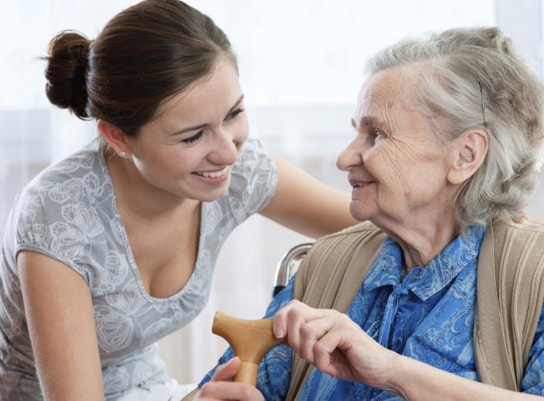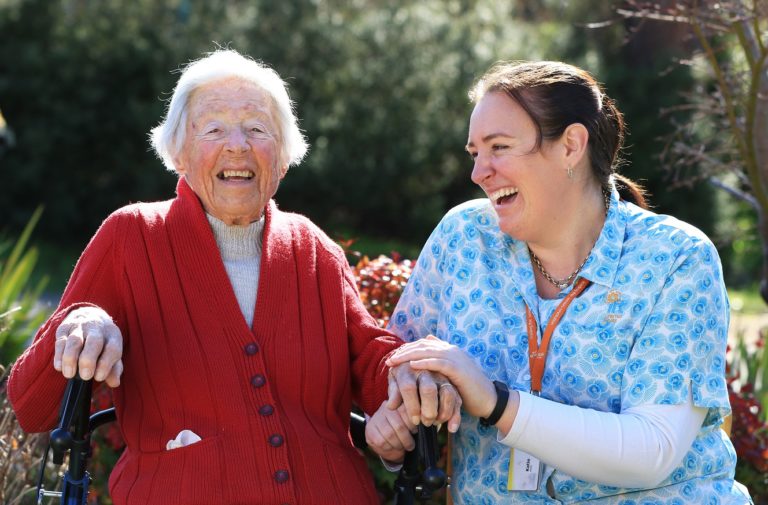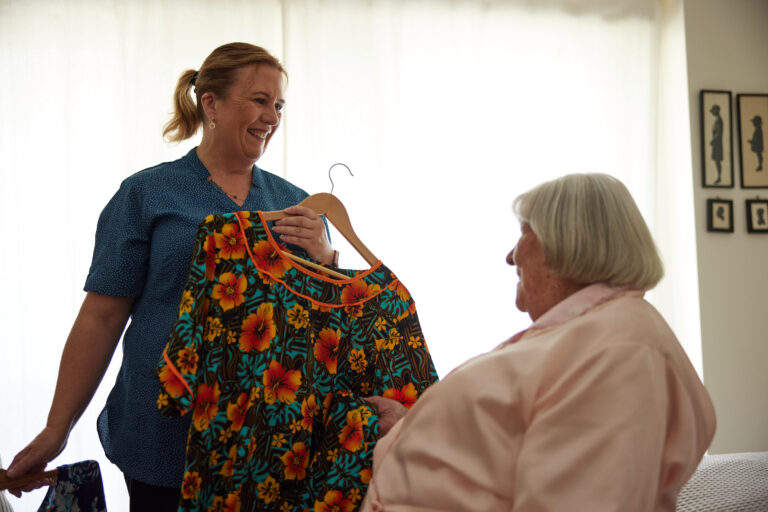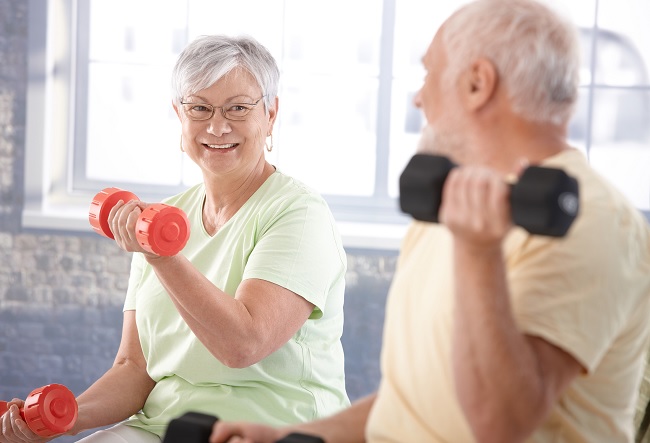10 Fall Prevention Tips for Older People
We hear the phrase “he/she has had a fall” all too often. What are the consequences, and most importantly, how can we prevent falls from happening in the first place?

What does that actually mean to have a fall? At what age does it suddenly transition from ‘tripping over your own feet’ to the much more serious ‘suffering a fall’?
A fall is an event that results in a person inadvertently coming to rest on the ground or floor or other lower level…no surprises there. The term ‘having a fall’ though, tends to be associated with falls suffered by older people as a direct result of age related changes to our bodies. Things like weakening muscles, stiffening joints, blood pressure drops, deteriorating vision and sensory and balance problems all contribute to the risk of falls for older people.
The risk of falling is real
Fall prevention in older adults is incredibly important, as frequent falls can cause a loss of confidence and fear of falling, so older people become less active over time, which then further increases their risk of falling. (www2.health.vic.gov.au)
Did you know that one in three people over the age of 65 in Australia has a fall each year? Sadly, falls and serious injury go hand in hand with the most common being fractures to the hip and thigh, followed by injuries to the head? In fact, falls cause more injury-related deaths in Australia than road crash fatalities (13%) and remain one of the leading reasons for older Australians being admitted to hospital (38%). (Stay On Your Feet®, WA’s fall prevention program for older adults, stayonyourfeet.com.au).
Older adults are almost 12 times more likely to have a fall than a motor vehicle or pedestrian accident. (betterhealth.vic.gov.au)
However, there is plenty you can do to reduce the risk of falling. Here are 12 ways to prevent falls in older people:
1. Protect your health
There is no doubt that taking care of your overall health play a significant role in preventing falls:
- Talk to your doctor about your diet and managing prescription and non-prescription medication. If any make you sleepy or dizzy, make sure you tell your doctor.
- Stay on top of your Vitamin D and Iron levels.
- Have an annual eye and hearing test.
- Visit a podiatrist regularly.
- Drink plenty of fluid and get enough sleep.
2. Stay active
Be as active as you can – physical activity prevents falls at any age as the more active you are the better your chances of maintaining your muscle strength and joints flexible. Tai chi, walking or group exercise programs are excellent choices that can help you improve balance and prevent falls. Also ask your local gym or council – some have exercise programs specifically tailored for older persons.
3. Keep your house light and bright
While many features of our homes would not have presented a problem in our younger days, things like dark hallways could now be very dangerous in terms of the risk of falling.
Make sure lighting throughout the home is bright enough and in the right places such as stairways and narrow hallways. Movement-sensitive night-lights in bedrooms and bathrooms can also be beneficial.
4. Improve safety inside your home
Our homes age too, through general ‘wear and tear’ or lack of maintenance, making them less safe. Often we don’t notice these types of home hazards because we have lived there for many years without any problems. It is important to check your surroundings and take steps to make them safer:
- Remove all clutter from floors and walkways, such as stacks of newspapers, trailing electrical cords, ‘door sausages’ and pot plants.
- Repair or replace worn carpets and uneven lino or floorboards and check that mats and rugs are secure. Use non-slip mats in the bathroom, kitchen and anywhere that can become slippery when wet.
- Ensure bedspreads and curtains don’t trail along the ground.
- Chairs and beds should be sturdy and easy to get in and out of.
- Check for sharp corners on tables and benches.
- Wipe up spills immediately.
- Install grab bars and handrails where needed – stairs, hallways next to the toilet and in the shower, for example.
- Be aware of where your pets are before getting up out of your chair or bed.
5. Improve safety outside
- Roll up that hose!
- Install appropriate lighting along paths and at the front door – while you’re there, check the door mat for trip hazards.
- Clear away brooms and rakes.
- Don’t use a ladder- get help. Family and neighbours are only too happy to lend a hand.
- Remove slippery moss, funghi and leaves from paths.
- Mark the leading edge of outside steps with white paint so they are easy to see.
- Repair uneven paths.
- Wear a hat and sunglasses to reduce sun glare.

6. Use assistive devices if you need help feeling steady when you walk.
There are plenty of assistive technologies and devices available designed to address falls prevention and help a person move around their home and the community in safety and comfort.
Appropriate use of walking aids can prevent falls. If your doctor tells you to use start using one, make sure it is the right size for you and that it is maintained in good condition. This is important when you're walking in areas you don't know well or where the walkways are uneven. A physical therapist or occupational therapist can help you decide which devices might be helpful and teach you how to use them safely.
7. Wear an emergency response system
Wearable medical alert systems are gaining increased popularity, and are offered by a number of providers. These devices provide health monitoring and around-the-clock emergency response, and can come fitted with a panic button and fall detection. Most systems use a landline and consist of a base unit and wearable help pendant, but there are also GPS-based mobile options for people on the go.
8. Plan your outfits
While some of us might like to dress to impress, we need to consider our fashion choices and whether they lead to an increased risk of falling in older adults.
Avoid wearing clothing that is too long, like a dressing gown. Don’t walk around wearing only socks or loose slippers.
9. Wear the right shoes when out and about
They should be wide enough in the toe area, have low or no heels, and have slip-resistant soles.
10. Tell your doctor
If you do fall, always tell your doctor at your next check-up, even if you aren't hurt when you fall. A fall can alert your doctor to a new medical problem or problems with your medications or eyesight that can be corrected. Your doctor may suggest physical therapy, a walking aid, or other steps to help prevent future falls.
11. Get help at home
Knowing your limits and getting the right help at home can prevent falls in the first place and keep you at home for longer. Don’t push yourself to do things you know are dangerous because you fear that asking for help from friends and family is a sign of weakness. It’s not – getting old is a privilege we all hope to get to one day. There is also government assistance available if you need it. READ MORE: Home Care
12. Plan ahead when building or renovating
No matter what your age, if you’re building or renovating, take the opportunity to incorporate design features that will allow you to ‘age in place’ to stay in your home for as long as possible and reduce many of the risk factors that can lead to falls in the process. It’s also much cheaper to include these features now, rather than making big changes later.
- Indoor and outdoor floor surfaces should be level and slip resistant.
- Design wide corridors, doorways, bathrooms and car parks.
- Doors should open outwards for better access.
- Pay close attention to the bathroom – no steps to get in and out of the shower, hand-rails where appropriate, recessed soap holders (so you won’t hit them if you slip) and non-slip tiles.
- Good lighting throughout with two-way light switches in corridors, stairs, living areas and next to beds.
- Choose building materials that require minimal maintenance.
- Put a lot of thought into the layout to avoid risk factors that may lead to falls – keep walking distances as short as possible, for example from the car to the front door, and the bedroom to the toilet, and avoid long corridors. In the kitchen, appliances installed at easy-to-reach height levels is also an important safety consideration.
If you do fall at home
Try not to panic
- Take some deep breaths and stay still for a while.
- If you can, call out for help.
- If you can reach your phone, call triple zero (000) or your doctor.
- Consider if you can get yourself up.
If you can get back up
- Try to get into a crawling position by rolling onto your stomach and pushing up with your arms and knees.
- Move to a sturdy piece of furniture, like a bed or sofa.
- Hold firmly onto the piece of furniture and try to slowly rise by pushing yourself up using your strongest side.
- Slowly sit down and rest.
If you can't get up
- If you are wearing a medical alert system, press the alert button for help.
- If you don't have an alert system, try to reach something you can use to make some noise to draw attention from a family member or neighbour - like a walking stick.
- Look around for anything within reaching distance that can keep you warm while you wait for help, like a towel, clothes or rug.
In an emergency, always call triple zero.
Further information on fall prevention
For more information, the Australian Government has a fantastic, comprehensive guide for fall prevention – Don’t fall for it.

Need a helping hand at home?
At IRT, we’ve been helping older Australians live their best lives for more than 50 years. We offer aged care centres and home care services in various locations across NSW, ACT and Qld. To learn more about IRT Home Care, click below or give our friendly Customer Service team a call on 134 478.
Find out moreReferences
- betterhealth.vic.gov.au
- https://www2.health.vic.gov.au/ageing-and-aged-care/wellbeing-and-participation/healthy-ageing/falls-prevention
- http://stayonyourfeet.com.au/
Subscribe to our newsletter
You may also like
Here's what happens if you neglect your physical health
Staying fit can be hard sometimes, but we've got plenty of simple tips to help keep you active.
Seven Questions for Kellie Marshall
Kellie Marshall is a Senior Clinical Psychologist and the newest member of the IRT Group Board.


